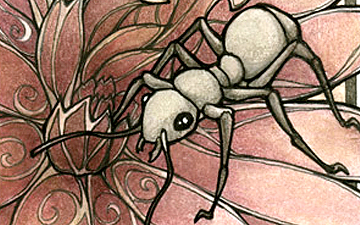The black carpenter ant (Camponotus pennsylvanicus) is a species of carpenter ant. It is the most common carpenter ant pest in the United States.
Appearance
C. pennsylvanicus can be distinguished from other carpenter ant species by the dull black color of the head and body, and by whitish or yellowish hairs on the abdomen. All castes of this species (including the major and minor workers, queens, and males) are black or blackish. Colonies have workers that are not all the same size (polymorphism). The antennae are elbowed, usually with 6-13 segments. Workers on average range from 1-2 cm long.
Behavior
Black carpenter ants are known to forage up to 100 yards in search of food. Workers are most active at night, traveling from their nest to a food source following trails. They do establish chemical (pheromone) trails. The ants produce crackling sounds that can often be heard near a large nest. A large colony can have thousands of individuals. The black carpenter ant does not sting, but the larger workers can administer a sharp bite, which can become further irritated by the injection of formic acid, which they produce. Black carpenter ants are fiercely territorial with regard to other ants.
Black carpenter ants do not eat or digest wood, but they tunnel through wood, which can cause structural damage.
Diet
Black carpenter ants are omnivorous. They can eat a great variety of both animal and plant foods, including plant juices, fruits, living or dead insects, other small invertebrates, common sweets such as syrup, honey, jelly, sugar, and fruit, and most kinds of meat, grease, and fat. Unlike termites, they cannot digest wood cellulose.
(From Wikipedia, May 11th, 2010)
– – –




